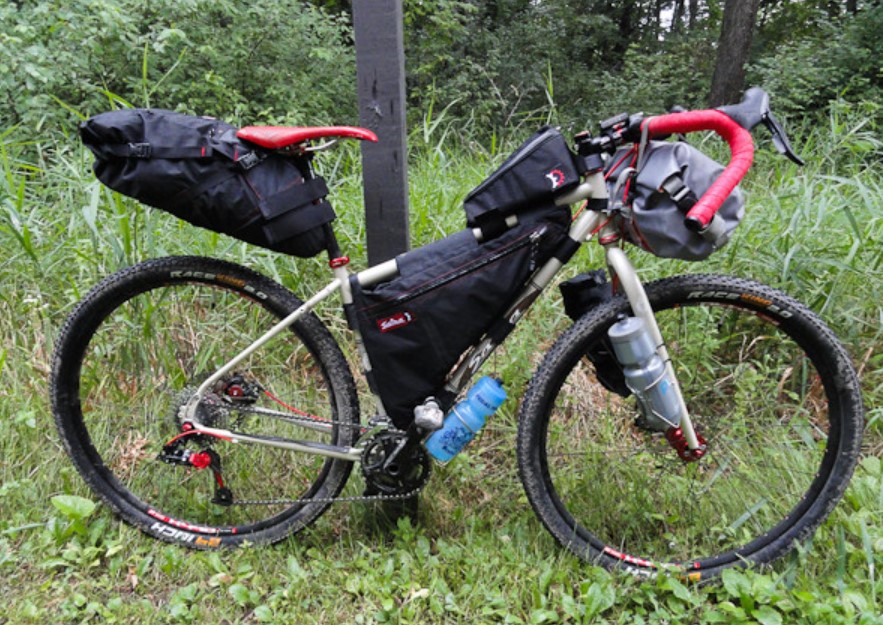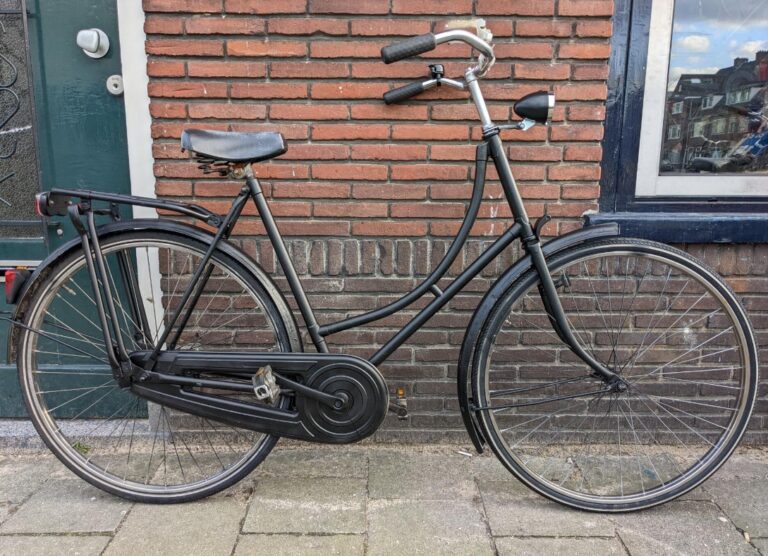How To Carry A Backpack On A Bike? Explained
When it comes to cycling, carrying a backpack can be a challenge. Whether commuting to work, heading to school, or embarking on a cycling adventure, knowing How To Carry A Backpack On A Bike? is essential for a comfortable and safe ride. The key lies in selecting the right backpack, packing it appropriately, and understanding how to secure it on your bike. This comprehensive guide will walk you through each step, ensuring your cycling experience is both enjoyable and efficient.
Key Takeaways
- Choosing the Right Backpack: Select a bike-friendly backpack for comfort and safety.
- Packing Smartly: Balance weight and avoid overpacking to maintain stability.
- Attachment Methods: Learn various techniques to secure your backpack on a bike.
- Safety Considerations: Prioritize visibility and backpack positioning for safe riding.
How To Carry A Backpack On A Bike?
To carry a backpack on a bike, wear it on your back with the straps adjusted for a snug, secure fit. Ensure the weight inside is evenly distributed to maintain balance.
For heavier loads or longer rides, consider attaching the backpack to a bike rack or converting it into a pannier. This method reduces back strain and improves stability. Always check that the backpack is securely fastened to prevent shifting or falling during the ride.

Choosing the Right Backpack for Cycling
Importance of the Right Fit
Selecting a suitable backpack is crucial for cycling comfort. A bike-friendly backpack should have:
- Ergonomic design: Ensures comfort during long rides.
- Adjustable straps: Allows for a snug fit, reducing movement and instability.
- Reflective elements: Increases visibility for safety.
Key Features to Look For
When shopping, focus on:
- Size and capacity: Ensure it fits your needs without being overly bulky.
- Weather resistance: Protects contents from rain or sweat.
- Lightweight construction: Reduces strain on your back.
Packing Your Backpack Smartly
Balancing Weight
A well-packed backpack can significantly impact your ride. Tips for balancing weight:
- Distribute heavy items evenly.
- Keep heavier items closer to your back.
- Utilize compartments to avoid shifting.
What to Carry?
Pack essentials to avoid overburdening:
- Tools and repair kits for emergencies.
- Water and snacks for hydration and energy.
- Layered clothing for changing weather conditions.
How to Attach a Backpack to Your Bike?

Using a Backpack Rack
A backpack rack is an effective way to carry your bag, offering:
- Stability: Prevents the backpack from shifting.
- Easy access: Keeps your items within reach.
- Reduced back strain: Lightens the load on your back.
Alternative Attachment Methods
Other methods include:
- Pannier conversion: Convert your backpack into a bike pannier.
- Bungee cords: Securely fasten your backpack to the bike frame.
Safety Considerations When Carrying a Backpack
Ensuring Visibility
Safety is paramount when cycling with a backpack:
- Use reflective backpacks or add reflective strips.
- Choose brightly colored bags for daytime visibility.
Proper Backpack Positioning
Positioning your backpack correctly can prevent accidents:
- Avoid low-hanging bags that can get caught on wheels.
- Secure all straps to prevent entanglement.
Cycling with a Backpack: Pros and Cons
Advantages
Cycling with a backpack offers:
- Convenience: Easy to carry personal items.
- Flexibility: Suitable for various types of bikes.
Disadvantages
However, there are drawbacks:
- Potential discomfort: Can cause back pain on long rides.
- Balance issues: This may affect cycling stability.
Maintaining Your Backpack for Cycling
Regular Cleaning
Keeping your backpack clean enhances its longevity:
- Wipe down after each ride to remove dirt and sweat.
- Periodically wash according to manufacturer instructions.
Periodic Inspections
Regularly inspect your backpack for:
- Wear and tear: Check for rips or weakened seams.
- Strap integrity: Ensure all buckles and straps are secure.
How Do You Carry A Backpack While Cycling?
Carrying a backpack while cycling requires consideration of both comfort and safety. The ideal way is to wear the backpack on your back, ensuring it has ergonomic features for support.
The backpack should have adjustable straps for a snug fit, minimizing movement while riding. It’s important to evenly distribute the weight inside the backpack and use chest and waist straps if available.

This method is effective for shorter rides or when carrying light to moderate loads. For longer journeys or heavier loads, alternative methods such as attaching the backpack to the bike may be preferable.
Is It OK To Wear A Backpack On A Bike?
Wearing a backpack on a bike is generally okay, especially for short commutes or light traveling. However, it’s crucial to ensure the backpack is not too heavy, as it can cause back strain or affect balance and posture.
For longer rides or heavier loads, consider alternative methods like using bike racks or panniers. If wearing a backpack, choose one that is designed for cycling, with features such as reflective materials for visibility, ergonomic design for comfort, and waterproof materials for weather protection.
How Do You Carry A School Bag On A Bike?
Carrying a school bag on a bike can be challenging due to books and laptops’ weight and size. A suitable method is using a pannier or a bike rack. Panniers allow you to distribute the weight evenly on both sides of the bike, maintaining balance.

If a rack is used, secure the school bag with bungee cords or straps to ensure it doesn’t shift or fall off during the ride. For lighter loads, a backpack designed for cycling can be worn, provided it has enough capacity and proper support features.
How Do You Secure A Backpack On A Bike Rack?
Securing a backpack on a bike rack involves ensuring that the bag is firmly attached and won’t move around while cycling. The most common method is using bungee cords or straps with hooks.
Place the backpack centrally on the rack and use the cords or straps to tightly secure it around the rack, ensuring that all pockets are closed and no loose straps are hanging.
It’s essential to check the stability of the backpack before starting your ride to prevent any accidents or damage to the contents inside.
Conclusion
Understanding how to carry a backpack on a bike with variation is essential for any cyclist. By choosing the right backpack, packing it effectively, and following safety guidelines, you can enhance your riding experience. Remember to regularly maintain your backpack for durability. Embrace these tips, and you’ll be ready to hit the road with confidence and ease.
Top FAQ’s
How do I maintain my backpack for cycling?
Regularly clean your backpack to remove dirt and sweat. Check for signs of wear and tear, especially in the straps and seams. Washing instructions vary, so always follow the manufacturer’s guidelines to ensure the backpack’s longevity and performance.
Are there specific backpacks for different types of bikes?
While there are no strict rules, certain backpacks may be more suitable for specific bike types. For example, streamlined backpacks are better for road bikes, while rugged, durable ones suit mountain biking.
Can carrying a backpack affect my cycling posture?
Yes, a heavy or improperly worn backpack can lead to poor posture, causing back and shoulder pain. Ensure the backpack is not too heavy and is adjusted to fit snugly against your back. Use all the available straps to distribute the weight evenly.
What essentials should I carry in my backpack for a long bike ride?
For long rides, carry water, snacks, a basic tool kit, a spare inner tube, a pump, a phone, and an extra layer of clothing. It’s also wise to include a small first-aid kit and sun protection.

Welcome to the exhilarating world of Matt Rex, a professional car racer turned renowned vehicle enthusiast. Immerse yourself in his captivating blog as he shares heart-pounding adventures, expert reviews, and valuable insights on cars, trucks, jets, and more. Fuel your passion for speed and discover the beauty of vehicles through Matt’s engaging stories and meticulous expertise. Join the ever-growing community of enthusiasts who find inspiration and expert advice in Matt Rex’s blog—a digital hub where the thrill of speed meets the pursuit of knowledge.







